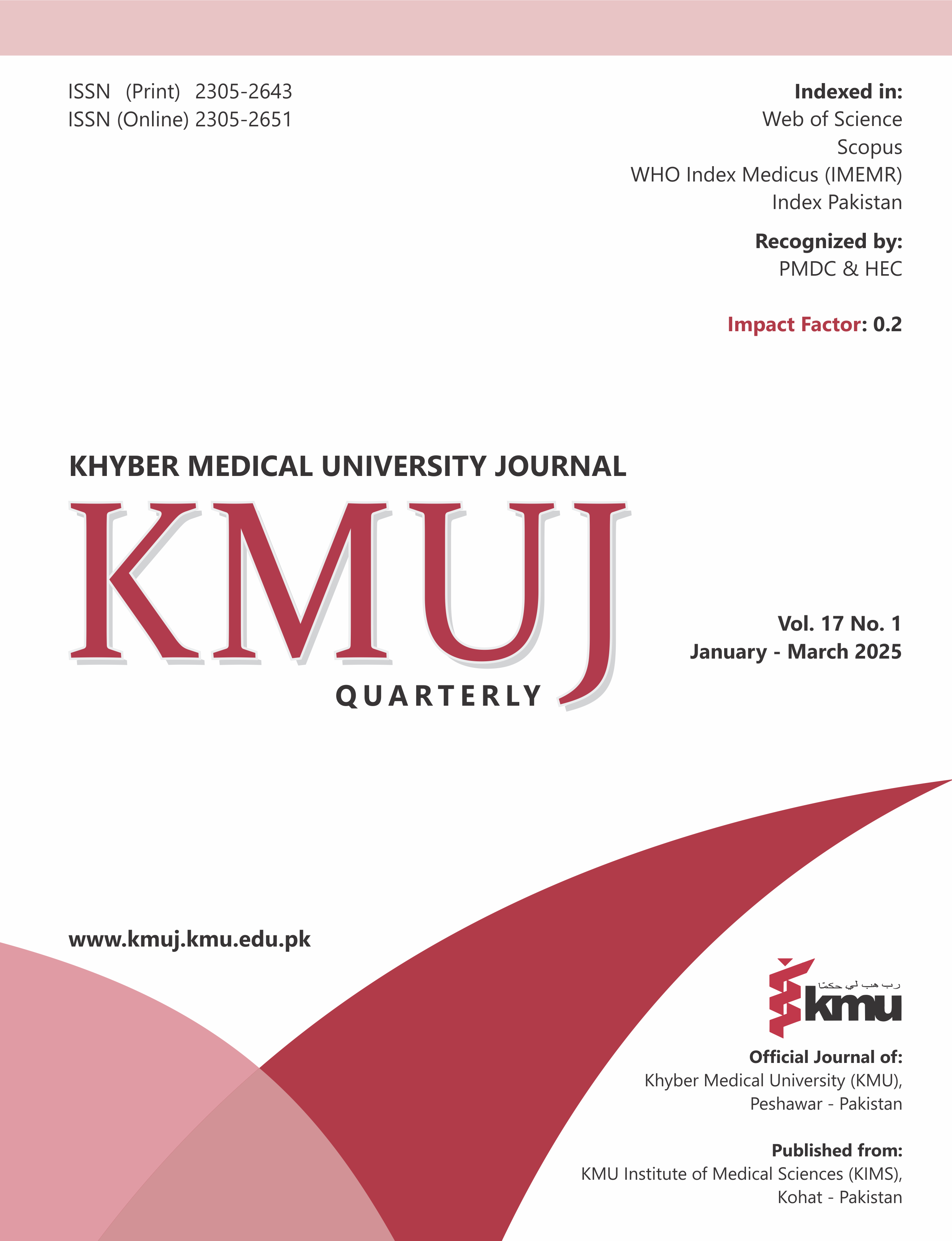Calcium alkali syndrome, a resurging entity: a case report and historical overview
Main Article Content
Abstract
Background: Calcium-alkali syndrome (CAS), previously termed milk-alkali syndrome, is characterized by hypercalcemia, metabolic alkalosis, and acute kidney injury due to excessive intake of calcium and absorbable alkali. Initially associated with the Sippy diet for peptic ulcer treatment, its prevalence declined with modern gastrointestinal therapies but has resurged due to widespread Calcium Carbonate supplementation. Early recognition of CAS is essential to prevent hypercalcemic crises and renal dysfunction.
Case Presentation: A 60-year-old male with a history of hypertension and type 2 diabetes mellitus presented with palpitations, generalized weakness, muscle aches, polyuria, nausea, and a single episode of non-bloody vomiting. Examination revealed tachycardia (117 beats per minute) and severe hypertension (193/126 mmHg). Electrocardiography showed sinus tachycardia with premature ventricular complexes. Laboratory findings included severe hypercalcemia (18.9 mg/dL), acute kidney injury (creatinine rise from 0.8 to 2.9 mg/dL), and elevated BUN, bilirubin, total protein, white blood cell count, and CRP. Imaging ruled out alternative causes, and suppressed parathyroid hormone levels excluded hyperparathyroidism. A detailed history revealed chronic ingestion of 3–6 Calcium Carbonate (TUMS) tablets daily for acid reflux. Management included intravenous hydration, Zoledronic Acid, Furosemide, and antihypertensives, resulting in calcium normalization and renal function recovery.
Conclusion: This case highlights the resurgence of CAS due to excessive over-the-counter Calcium use. Early diagnosis and management, including cessation of calcium supplements, aggressive hydration, and electrolyte monitoring, are crucial in preventing complications. Long-term follow-up is essential to ensure renal function recovery and prevent recurrence.
Article Details

This work is licensed under a Creative Commons Attribution 4.0 International License.
Work published in KMUJ is licensed under a
Creative Commons Attribution 4.0 License
Authors are permitted and encouraged to post their work online (e.g., in institutional repositories or on their website) prior to and during the submission process, as it can lead to productive exchanges, as well as earlier and greater citation of published work.
(e.g., in institutional repositories or on their website) prior to and during the submission process, as it can lead to productive exchanges, as well as earlier and greater citation of published work.
References
1. Patel A, Goldfarb S. Got calcium? Welcome to the calcium-alkali syndrome. J Am Soc Nephrol 2010;21(9):1440-3. https://doi.org/10.1681/asn.2010030255
2. Sippy BW. Landmark article May 15, 1915: Gastric and duodenal ulcer. Medical cure by an efficient removal of gastric juice corrosion. JAMA 1983;250(16):2192-7. https://doi.org/10.1001/jama.250.16.2192
3. Orwoll ES. The milk-alkali syndrome: current concepts. Ann Intern Med 1982;97(2):242-8. https://doi.org/10.7326/0003-4819-97-2-242
4. Beall DP, Henslee HB, Webb HR, Scofield RH. Milk-alkali syndrome: a historical review and description of the modern version of the syndrome. Am J Med Sci 2006;331(5):233-42. https://doi.org/10.1097/00000441-200605000-00001
5. Beall DP, Scofield RH. Milk-alkali syndrome associated with calcium carbonate consumption. Report of 7 patients with parathyroid hormone levels and an estimate of prevalence among patients hospitalized with hypercalcemia. Medicine (Baltimore) 1995;74(2):89-96. https://doi.org/10.1097/00005792-199503000-00004
6. Hardt LL, Rivers AB. Toxic manifestations following the alkaline treatment of peptic ulcer. Arch Intern Med 1923;31:171-80.
7. Kirsner JB, Palmer WL. Alkalosis complicating the Sippy treatment of peptic ulcer. Arch Intern Med 1942;69:789-807.
8. Cope CL. Base changes in the alkalosis produced by the treatment of gastric ulcer with alkalies. Clin Sci 1936;2:287-300.
9. Burnett CH, Commons RR, Albright F, Howard JE. Hypercalcemia without hypercalciuria or hypophosphatemia, calcinosis and renal insufficiency; a syndrome following prolonged intake of milk and alkali. N Engl J Med 1949;240(20):787-94. https://doi.org/10.1056/nejm194905192402001
10. Punsar S, Somer T. The milk-alkali syndrome. A report of three illustrative cases and a review of the literature. Acta Med Scand 1963;173:435-49.
11. McMillan DE, Freeman RB. The milk alkali syndrome: a study of the acute disorder with comments on the development of the chronic condition. Medicine (Baltimore) 1965;44(6):485-501. https://doi.org/10.1097/00005792-196511000-00002
12. Wenger J, Kirsner JB, Palmer WL. The milk-alkali syndrome; hypercalcemia, alkalosis and azotemia following calcium carbonate and milk therapy of peptic ulcer. Gastroenterology 1957;33(5):745-69.
13. Schuman CA, Jones HW 3rd. The “milk-alkali” syndrome: two case reports with discussion of pathogenesis. Q J Med 1985;55(217):119-26.
14. Jamieson MJ. Hypercalcaemia. Br Med J (Clin Res Ed) 1985;290(6465):378-82. https://doi.org/10.1136/bmj.290.6465.378
15. Medarov BI. Milk-alkali syndrome. Mayo Clin Proc 2009;84(3):261-7. https://doi.org/10.4065/84.3.261
16. Picolos MK, Lavis VR, Orlander PR. Milk-alkali syndrome is a major cause of hypercalcemia among non-end-stage renal disease (non-ESRD) inpatients. Clin Endocrinol (Oxf) 2005;63(5):566-76. https://doi.org/10.1111/j.1365-2265.2005.02383.x
17. Felsenfeld AJ, Levine BS. Milk alkali syndrome and the dynamics of calcium homeostasis. Clin J Am Soc Nephrol 2006;1:641-54. https://doi.org/10.2215/cjn.01451005
18. Parvez B, Emuwa C, Faulkner ML, Murray JJ. Milk alkali and hydrochlorothiazide: a case report. Case Rep Med 2011;2011:729862. https://doi.org/10.1155/2011/729862
18. Bronner F. Mechanisms of intestinal calcium absorption. J Cell Biochem 2003;88(2):387-93. https://doi.org/10.1002/jcb.10330
19. Lin SH, Lin YF, Cheema-Dhadli S, Davids MR, Halperin ML. Hypercalcaemia and metabolic alkalosis with betel nut chewing: emphasis on its integrative pathophysiology. Nephrol Dial Transplant 2002;17(5):708-14. https://doi.org/10.1093/ndt/17.5.708
20. Yang JD, Lawson P, Beland S. Severe hypercalcemia from the milk-alkali syndrome. Am J Med 2013;126(9):e1-2. https://doi.org/10.1016/j.amjmed.2013.03.016
